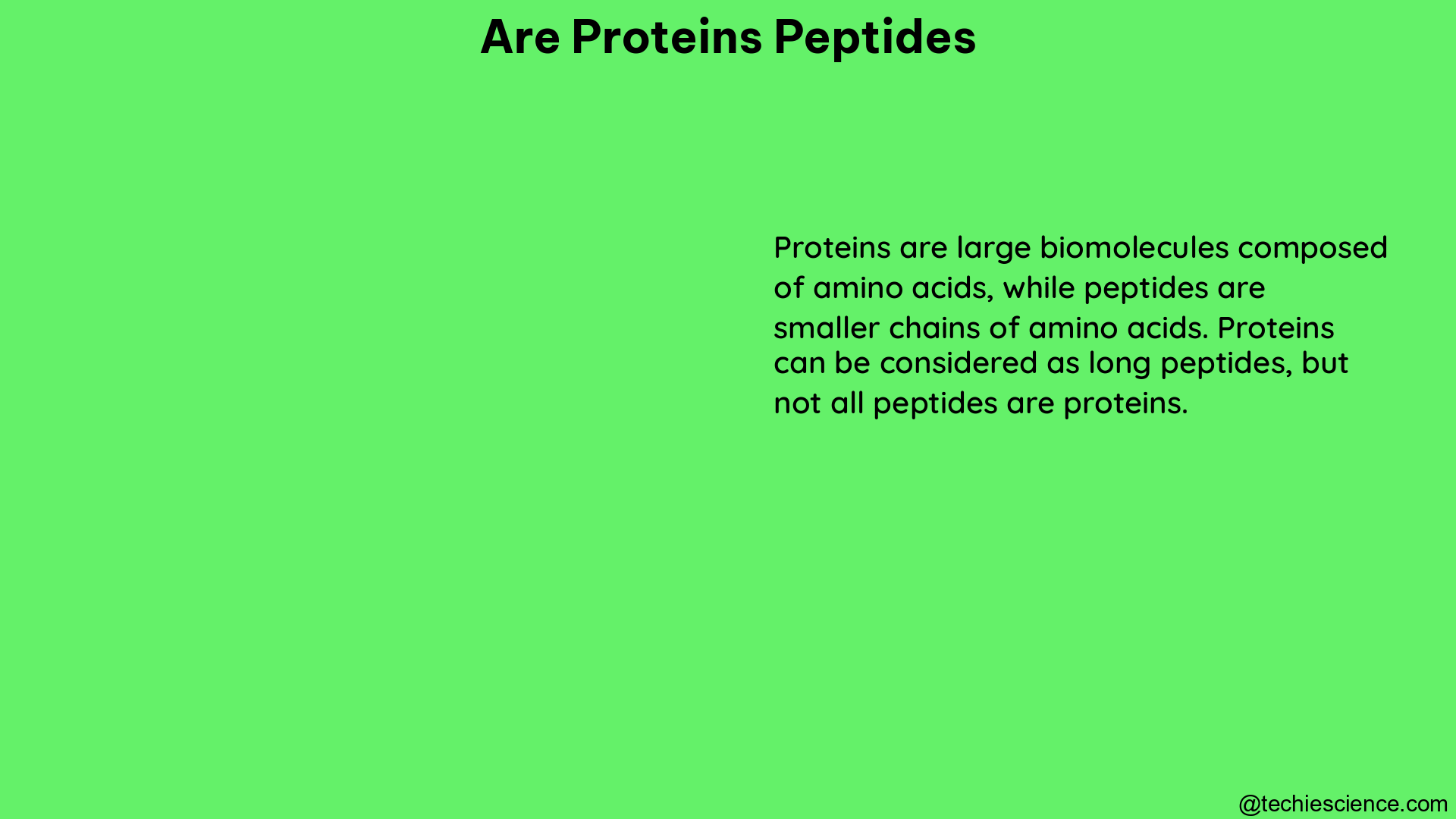Proteins and peptides are both essential biomolecules that play crucial roles in various biological processes, but they differ in their structural and functional characteristics. Understanding the relationship between proteins and peptides is crucial in the field of proteomics, where researchers aim to study the structure, function, and interactions of these molecules.
Proteins vs. Peptides: Structural Differences
Proteins are large, complex molecules composed of long chains of amino acids linked together by peptide bonds. These chains can range from a few hundred to several thousand amino acids, forming intricate three-dimensional structures. Proteins can be classified into different categories based on their structure, such as globular proteins, fibrous proteins, and membrane proteins.
On the other hand, peptides are shorter chains of amino acids, typically ranging from 2 to 50 amino acids. Peptides are often considered the building blocks of proteins, as they can be combined to form larger protein structures. Peptides can also have their own unique biological functions, such as signaling molecules, hormones, and antimicrobial agents.
Quantifying Proteins and Peptides in Proteomics

In proteomics research, scientists often need to quantify the abundance of proteins and peptides in biological samples. One common approach is mass spectrometry (MS), which provides information on the identity and abundance of peptides within a sample. However, MS does not directly measure the concentration of the corresponding proteins.
To infer the concentrations of proteins from MS data, researchers often use statistical models and algorithms. One such model is called SCAMPI (Statistical Approach to Protein Quantification), which was developed and published in the Journal of Proteome Research.
The SCAMPI model explicitly includes information from shared peptides to improve protein quantitation, especially in eukaryotes with many homologous sequences. This model accounts for uncertainty in the input data, leading to statistical prediction intervals for the protein scores. Additionally, peptides with extreme abundances can be reassessed and classified as either regular data points or actual outliers.
Compared to other protein quantification methods, such as TOP n (2) and MaxQuant (10), the SCAMPI model offers a novel approach involving a probabilistic framework and generic formulation. It also provides a prediction interval for each protein abundance score and allows for the reassessment of peptide abundances.
Challenges in Peptide Quantification
While MS-based proteomics has become a powerful tool for protein and peptide identification and quantification, there are still challenges and limitations that researchers must consider.
One such challenge is the issue of peptides that are not quantifiable in their background matrix. This means that certain peptides cannot be accurately measured due to interference from other molecules in the sample. This can lead to incomplete or inaccurate data in proteomics research, as some peptides may be missed or their abundances may be skewed.
To address this challenge, researchers have developed various strategies to identify and overcome the factors that can interfere with peptide quantification. These strategies may involve sample preparation techniques, optimization of MS parameters, and the use of internal standards or spike-in controls.
Conclusion
In summary, proteins and peptides are related but distinct biomolecules, with proteins being larger and more complex structures composed of peptide chains. Quantifying proteins and peptides is a crucial aspect of proteomics research, and various methods, such as mass spectrometry and statistical models like SCAMPI, have been developed to address this challenge.
However, researchers must also be aware of the limitations and potential pitfalls in peptide quantification, such as the issue of non-quantifiable peptides due to matrix interference. Ongoing research and advancements in proteomics techniques and data analysis methods will continue to improve our understanding and ability to accurately quantify proteins and peptides in biological samples.
References:
- Statistical Approach to Protein Quantification. PMC – NCBI. https://www.ncbi.nlm.nih.gov/pmc/articles/PMC3916661/
- Is a peptide quantitatively measurable? Here’s how you find out! ProteomicsNews. https://proteomicsnews.blogspot.com/2020/02/is-peptide-quantitatively-measurable.html
- What does it mean when proteins/peptides are identifiable, but not quantifiable? Reddit. https://www.reddit.com/r/proteomics/comments/16u9fi7/what_does_it_mean_when_proteinspeptides_are/

Hi, I am Saif Ali. I obtained my Master’s degree in Microbiology and have one year of research experience in water microbiology from National Institute of Hydrology, Roorkee. Antibiotic resistant microorganisms and soil bacteria, particularly PGPR, are my areas of interest and expertise. Currently, I’m focused on developing antibiotic alternatives. I’m always trying to discover new things from my surroundings. My goal is to provide readers with easy-to-understand microbiology articles.
If you have a bug, treat it with caution and avoid using antibiotics to combat SUPERBUGS.
Let’s connect via LinkedIn: